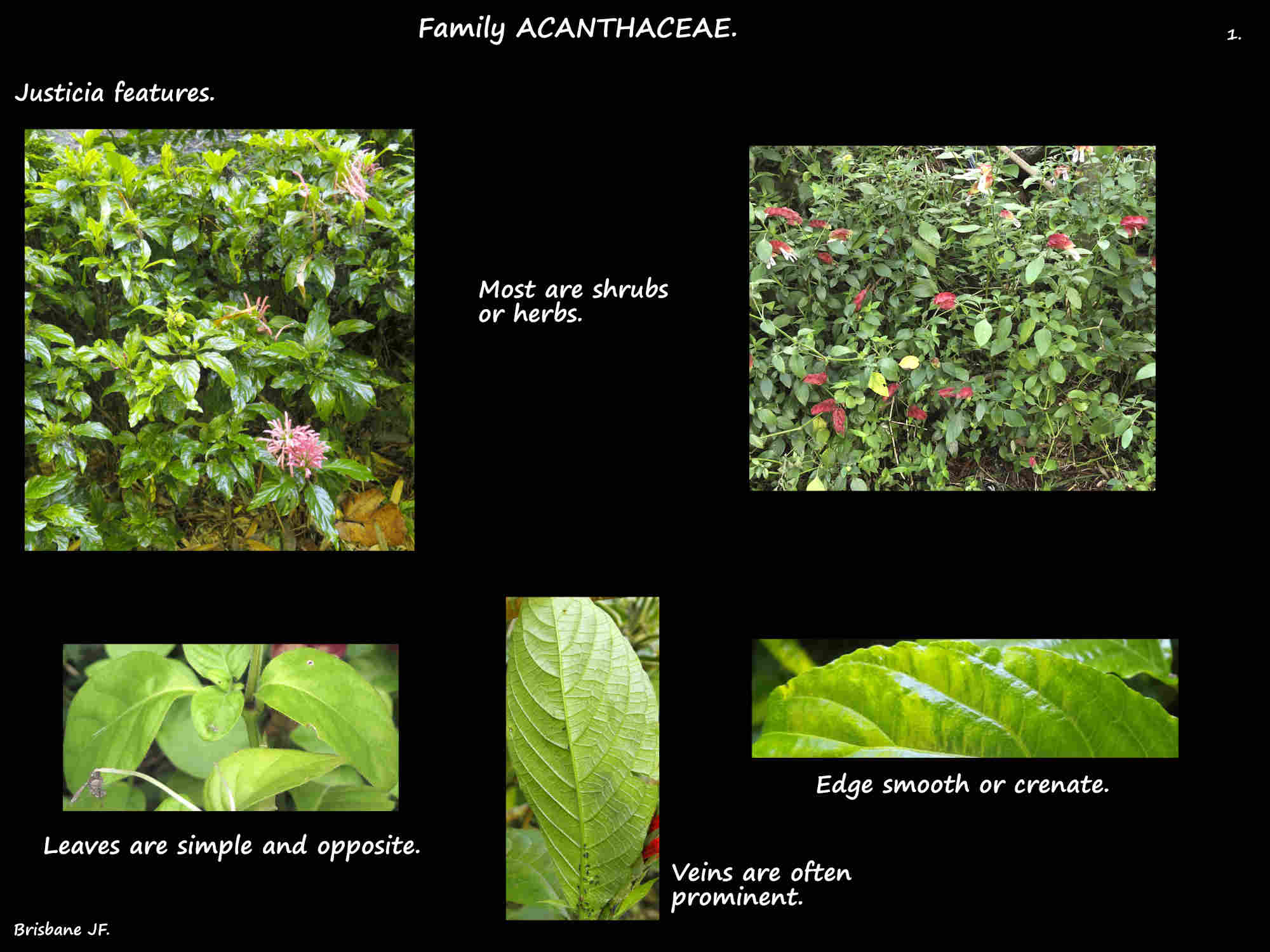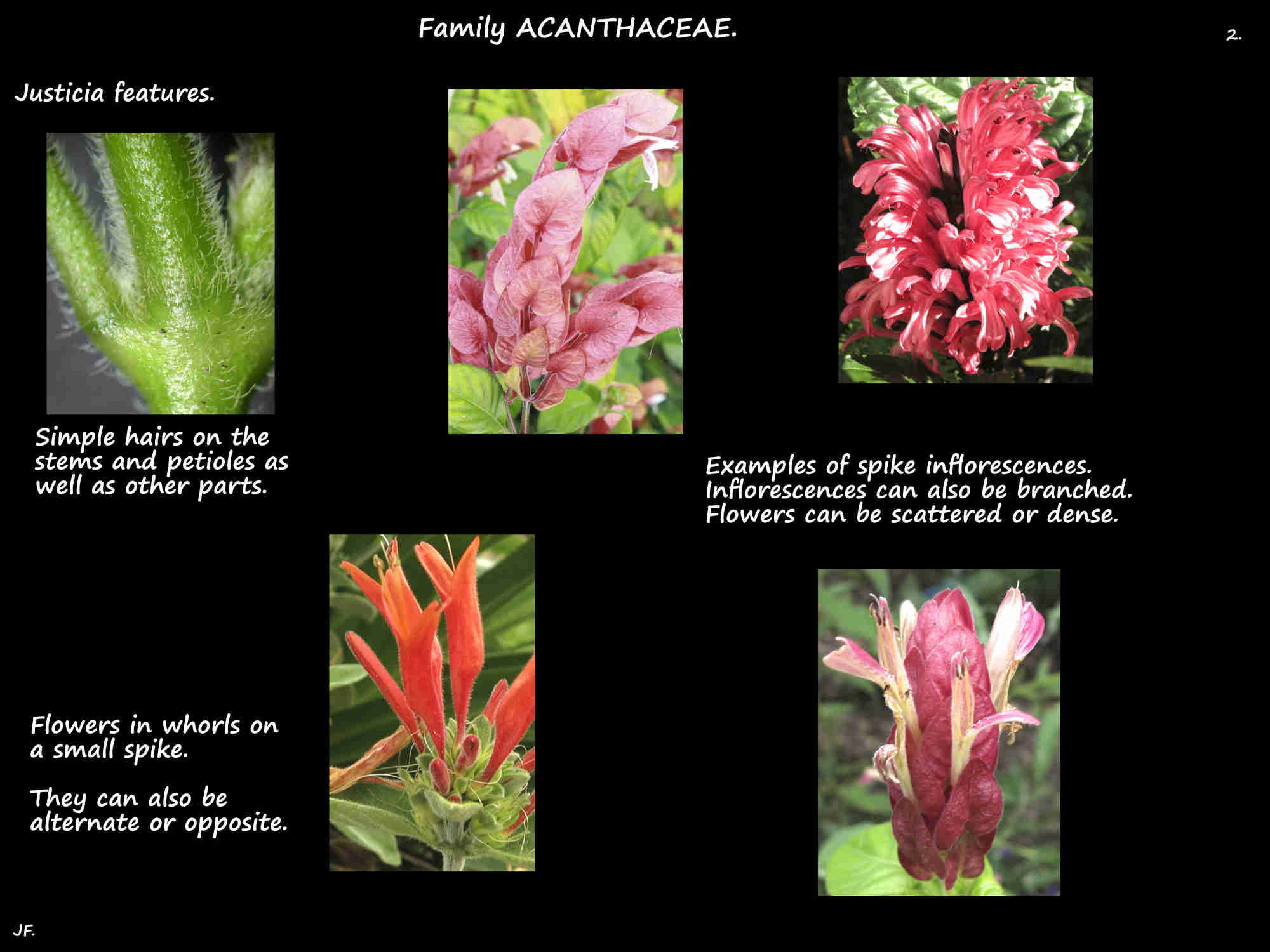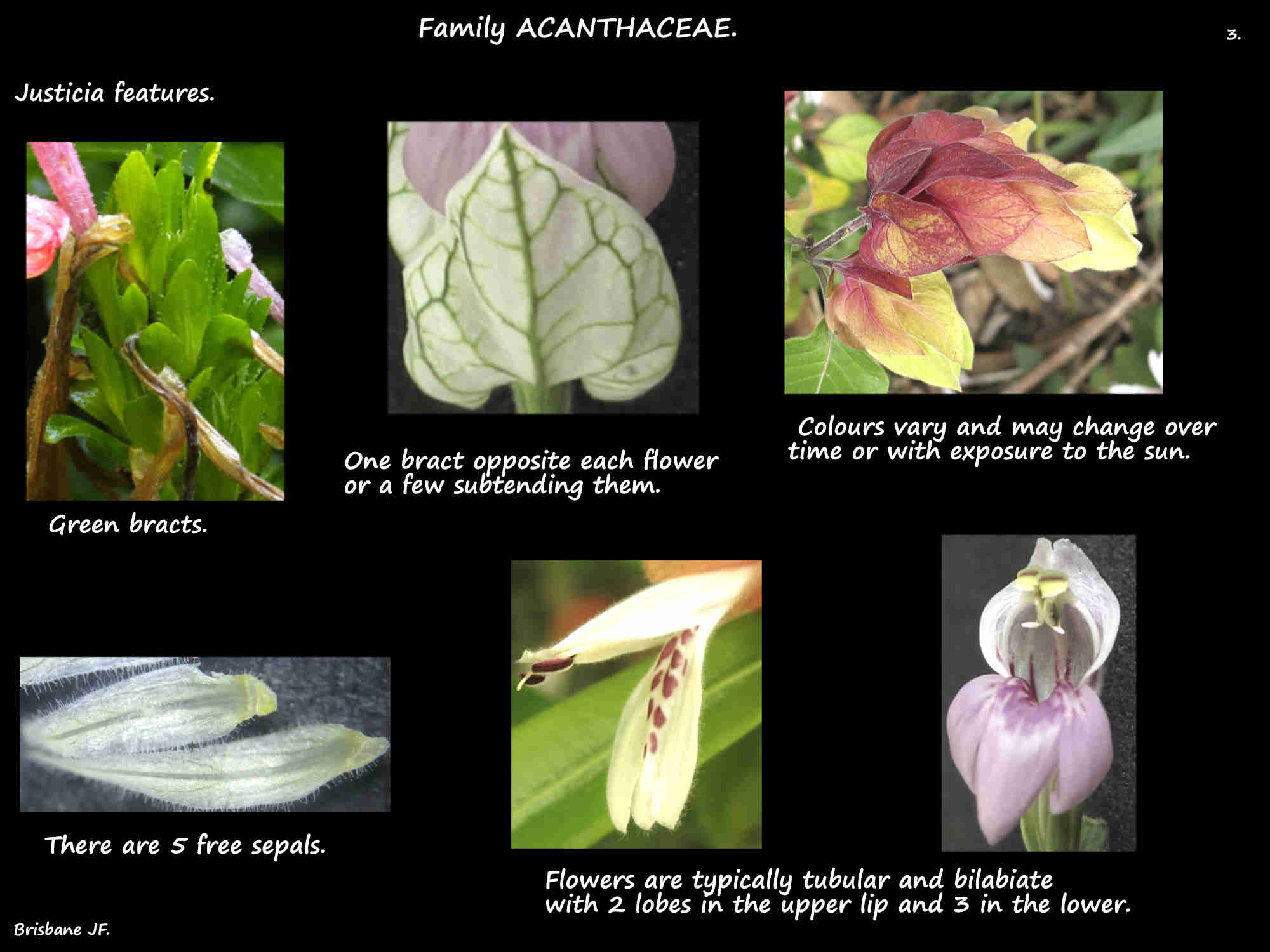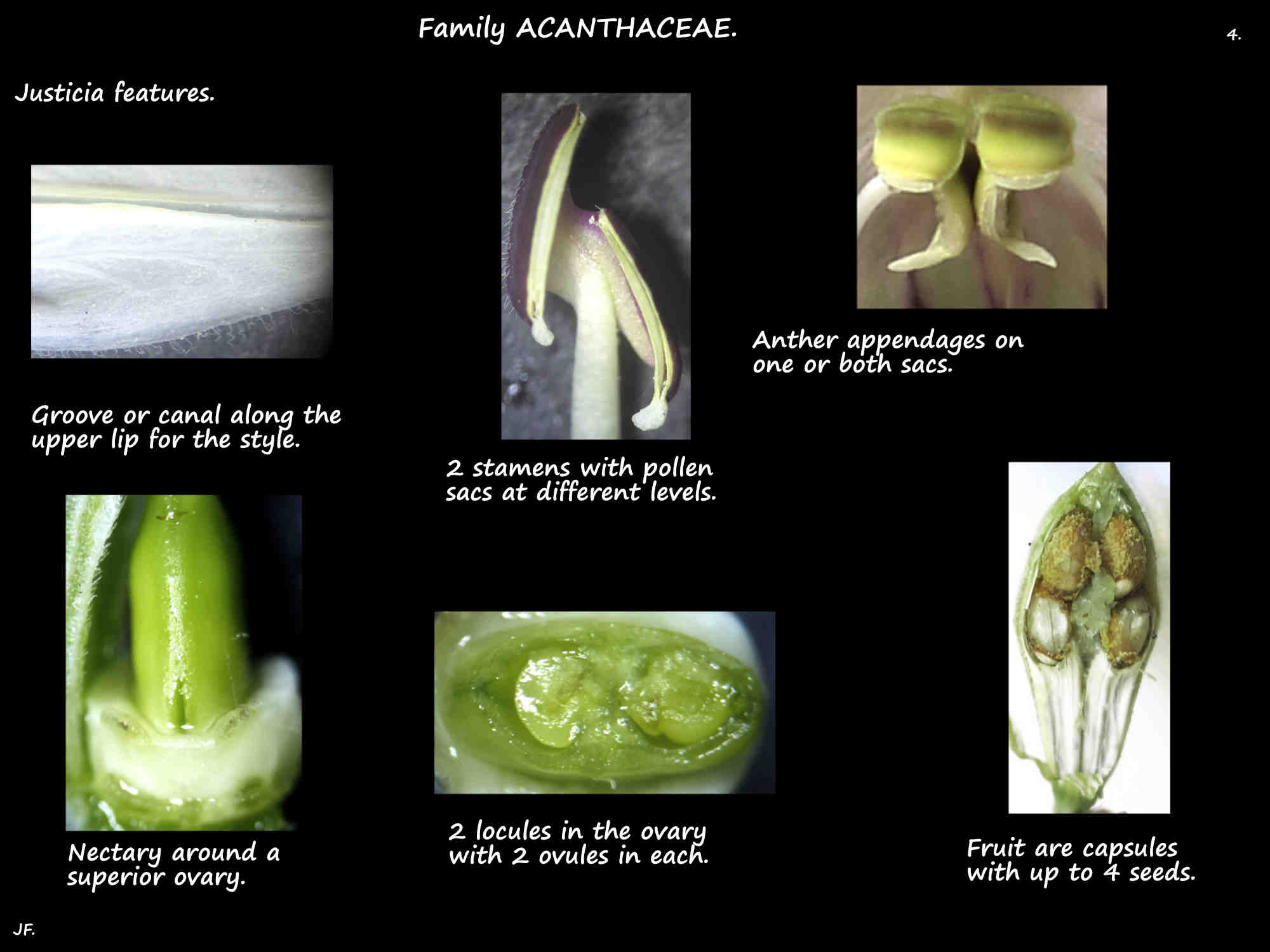Justicia.
This is the largest genus in the Acanthaceae family with around 800 species.
The Plant List recognises only 376 with 291 synonyms and over 1,000 names that are unresolved.
Mabberley recognises around 700.
Many species are cultivated as garden plants.
They are mainly evergreen shrubs or herbs with some trees.
The simple opposite leaves often have prominent veins.
Inflorescences can be spikes or panicles (branched with flowers opening from the bottom first).
Flowers can be alternate, opposite or in whorls.
They can be densely clustered or spread out.
There are typically bracts opposite or surrounding the flowers.
They can be oblong, lanceolate or elliptic.
The calyx has 5 lobes with one sometimes being shorter.
The flowers have a bilabiate tubular corolla.
The upper lip typically has 2 lobes and the lower lip 3.
The upper lip has a groove for the style.
The lower lip often has a raised appendage which covers the throat to various degrees.
Flowers come in white plus cream, yellow, orange, pink or violet.
There are often coloured areas on the lower lip.
The 2 stamens have their 2 thecae (pollen sacs) at different levels.
There may be an appendage on the base of both thecae, only the lower one or none.
There are no staminodes.
The type of aperture on the pollen grains, and their number are important in differentiating the species.
The fruit are capsules with or without hairs.
J.F.






